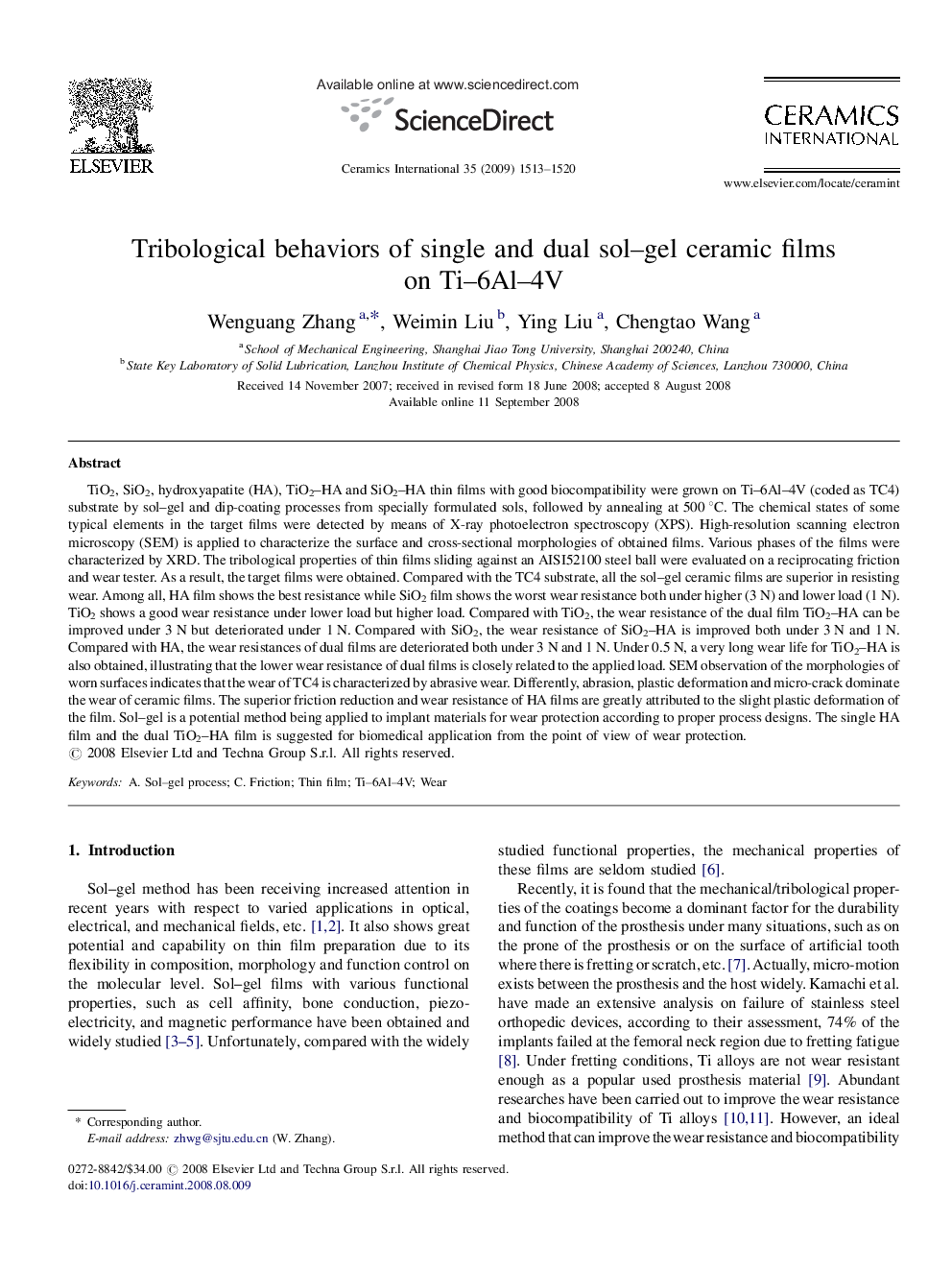| کد مقاله | کد نشریه | سال انتشار | مقاله انگلیسی | نسخه تمام متن |
|---|---|---|---|---|
| 1465320 | 989688 | 2009 | 8 صفحه PDF | دانلود رایگان |

TiO2, SiO2, hydroxyapatite (HA), TiO2–HA and SiO2–HA thin films with good biocompatibility were grown on Ti–6Al–4V (coded as TC4) substrate by sol–gel and dip-coating processes from specially formulated sols, followed by annealing at 500 °C. The chemical states of some typical elements in the target films were detected by means of X-ray photoelectron spectroscopy (XPS). High-resolution scanning electron microscopy (SEM) is applied to characterize the surface and cross-sectional morphologies of obtained films. Various phases of the films were characterized by XRD. The tribological properties of thin films sliding against an AISI52100 steel ball were evaluated on a reciprocating friction and wear tester. As a result, the target films were obtained. Compared with the TC4 substrate, all the sol–gel ceramic films are superior in resisting wear. Among all, HA film shows the best resistance while SiO2 film shows the worst wear resistance both under higher (3 N) and lower load (1 N). TiO2 shows a good wear resistance under lower load but higher load. Compared with TiO2, the wear resistance of the dual film TiO2–HA can be improved under 3 N but deteriorated under 1 N. Compared with SiO2, the wear resistance of SiO2–HA is improved both under 3 N and 1 N. Compared with HA, the wear resistances of dual films are deteriorated both under 3 N and 1 N. Under 0.5 N, a very long wear life for TiO2–HA is also obtained, illustrating that the lower wear resistance of dual films is closely related to the applied load. SEM observation of the morphologies of worn surfaces indicates that the wear of TC4 is characterized by abrasive wear. Differently, abrasion, plastic deformation and micro-crack dominate the wear of ceramic films. The superior friction reduction and wear resistance of HA films are greatly attributed to the slight plastic deformation of the film. Sol–gel is a potential method being applied to implant materials for wear protection according to proper process designs. The single HA film and the dual TiO2–HA film is suggested for biomedical application from the point of view of wear protection.
Journal: Ceramics International - Volume 35, Issue 4, May 2009, Pages 1513–1520